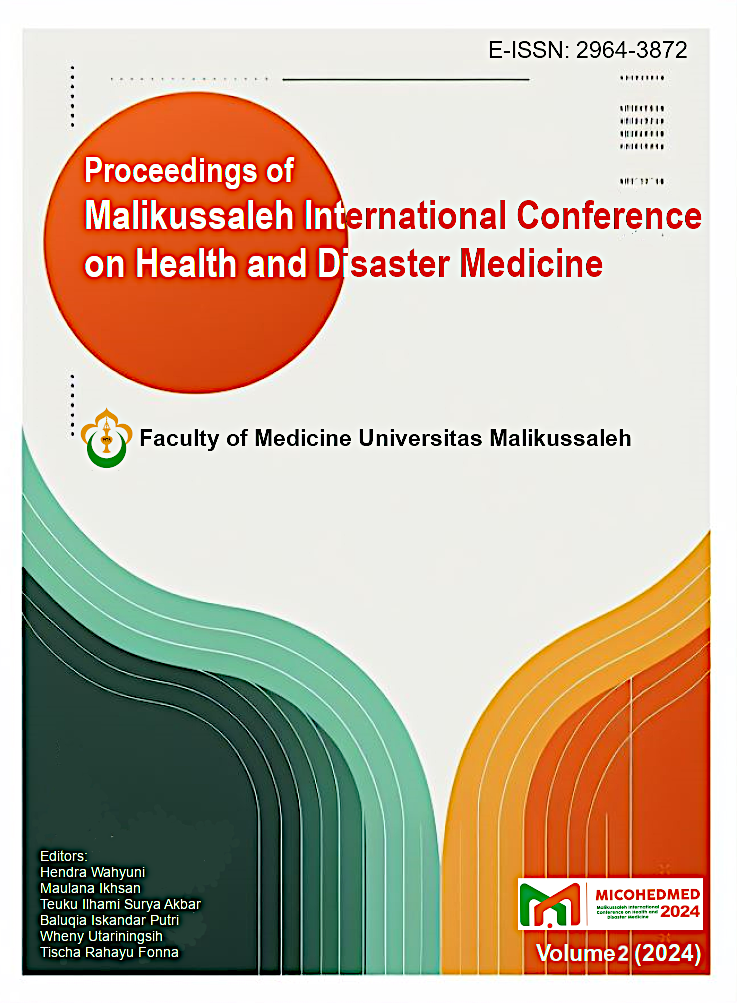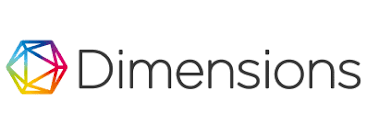Different Types of Early Life Stress Affected Histone H4 Acetylation in the Left Prefrontal Cortex of Mice in Different Pathways
DOI:
https://doi.org/10.29103/micohedmed.v2i.1206Keywords:
Histone, prefrontal cortex, early life stress, epigenetics, Western BlotAbstract
Histone H4 acetylation is an epigenetic change that regulates gene expression and is linked to a variety of neurological functions. The purpose of this study was to see how different types of early life stress affected histone H4 acetylation in the left prefrontal cortex (PFC) of mice. Histone acetylation levels were determined using Western blot analysis in four groups: control, control isolation, chronic stress, and chronic unpredictable stress. The control group comprised of mice that were not disturbed from birth until weaning, whereas the control isolation group was isolated after weaning. The chronic stress group was separated from their mothers on a daily basis, whereas the chronic unpredictable stress group was separated from their mothers on specified weekdays. Stress, according to our findings, may raise histone modification levels, whereas routine and repetitive stress situations may produce habituation behavior as a compensatory mechanism. Notably, this study provides preliminary evidence that different types of stress alter H4 acetylation in the PFC in mice. Understanding the molecular mechanisms governing histone acetylation in response to early life stress can offer light on the neurobiological processes at work and help to create tailored therapies for stress-related illnesses.
References
1. Saleh A, Potter GG, McQuoid DR, Boyd B, Turner R, MacFall JR, Taylor WD. Effects of early life stress on depression, cognitive performance and brain morphology. Psychol Med. Jan 2017;47(1):171-181.
2. Kemp KM, Colson J, Lorenz RG, Maynard CL, Pollock JS. Early life stress in mice alters gut microbiota independent of maternal microbiota inheritance. Am J Physiol Regul Integr Comp Physiol. May 1 2021;320(5):R663-R674.
3. Williams LM, Debattista C, Duchemin AM, Schatzberg AF, Nemeroff CB. Childhood trauma predicts antidepressant response in adults with major depression: data from the randomized international study to predict optimized treatment for depression. Transl Psychiatry. May 3 2016;6(5):e799.
4. Kendler KS, Kuhn JW, Prescott CA. Childhood sexual abuse, stressful life events and risk for major depression in women. Psychol Med. Nov 2004;34(8):1475-1482.
5. Hammen C, Henry R, Daley SE. Depression and sensitization to stressors among young women as a function of childhood adversity. J Consult Clin Psychol. Oct 2000;68(5):782-787.
6. Jonson-Reid M, Kohl PL, Drake B. Child and adult outcomes of chronic child maltreatment. Pediatrics. May 2012;129(5):839-845.
7. Merrill L, Grindstaff JL. Early Life Stress Strengthens Trait Covariance: A Plastic Response That Results in Reduced Flexibility. Am Nat. Nov 2018;192(5):593-604.
8. Hoeijmakers L, Ruigrok SR, Amelianchik A, Ivan D, van Dam AM, Lucassen PJ, Korosi A. Early-life stress lastingly alters the neuroinflammatory response to amyloid pathology in an Alzheimer's disease mouse model. Brain Behav Immun. Jul 2017;63:160-175.
9. Eck SR, Ardekani CS, Salvatore M, et al. The effects of early life adversity on growth, maturation, and steroid hormones in male and female rats. Eur J Neurosci. Jul 2020;52(1):2664-2680.
10. Hanson JL, Albert D, Iselin AM, Carre JM, Dodge KA, Hariri AR. Cumulative stress in childhood is associated with blunted reward-related brain activity in adulthood. Soc Cogn Affect Neurosci. Mar 2016;11(3):405-412.
11. Brake WG, Zhang TY, Diorio J, Meaney MJ, Gratton A. Influence of early postnatal rearing conditions on mesocorticolimbic dopamine and behavioural responses to psychostimulants and stressors in adult rats. Eur J Neurosci. Apr 2004;19(7):1863-1874.
12. Cabib S, Puglisi-Allegra S, D'Amato FR. Effects of postnatal stress on dopamine mesolimbic system responses to aversive experiences in adult life. Brain Res. Feb 26 1993;604(1-2):232-239.
13. Alfarez DN, Joels M, Krugers HJ. Chronic unpredictable stress impairs long-term potentiation in rat hippocampal CA1 area and dentate gyrus in vitro. Eur J Neurosci. May 2003;17(9):1928-1934.
14. Fogelman N, Canli T. Early Life Stress, Physiology, and Genetics: A Review. Front Psychol. 2019;10:1668.
15. McCann KE, Rosenhauer AM, Jones GMF, Norvelle A, Choi DC, Huhman KL. Histone deacetylase and acetyltransferase inhibitors modulate behavioral responses to social stress. Psychoneuroendocrinology. Jan 2017;75:100-109.
16. Nugent NR, Tyrka AR, Carpenter LL, Price LH. Gene-environment interactions: early life stress and risk for depressive and anxiety disorders. Psychopharmacology (Berl). Mar 2011;214(1):175-196.
17. Cavalli G, Heard E. Advances in epigenetics link genetics to the environment and disease. Nature. Jul 2019;571(7766):489-499.
18. Li Y. Modern epigenetics methods in biological research. Methods. Mar 2021;187:104-113.
19. Struhl K. Histone acetylation and transcriptional regulatory mechanisms. Genes Dev. Mar 1 1998;12(5):599-606.
20. Barreiro E, Tajbakhsh S. Epigenetic regulation of muscle development. J Muscle Res Cell Motil. Feb 2017;38(1):31-35.
21. Loidl P. Towards an understanding of the biological function of histone acetylation. FEBS Lett. Jan 25 1988;227(2):91-95.
22. Marmorstein R, Zhou MM. Writers and readers of histone acetylation: structure, mechanism, and inhibition. Cold Spring Harb Perspect Biol. Jul 1 2014;6(7):a018762.
23. McCoy CR, Rana S, Stringfellow SA, Day JJ, Wyss JM, Clinton SM, Kerman IA. Neonatal maternal separation stress elicits lasting DNA methylation changes in the hippocampus of stress-reactive Wistar Kyoto rats. Eur J Neurosci. Nov 2016;44(10):2829-2845.
24. Xie L, Korkmaz KS, Braun K, Bock J. Early life stress-induced histone acetylations correlate with activation of the synaptic plasticity genes Arc and Egr1 in the mouse hippocampus. J Neurochem. May 2013;125(3):457-464.
25. Tottenham N, Sheridan MA. A review of adversity, the amygdala and the hippocampus: a consideration of developmental timing. Front Hum Neurosci. 2009;3:68.
26. Gee DG, Humphreys KL, Flannery J, et al. A developmental shift from positive to negative connectivity in human amygdala-prefrontal circuitry. J Neurosci. Mar 6 2013;33(10):4584-4593.
27. Gee DG, Gabard-Durnam LJ, Flannery J, et al. Early developmental emergence of human amygdala-prefrontal connectivity after maternal deprivation. Proc Natl Acad Sci U S A. Sep 24 2013;110(39):15638-15643.
28. Teicher MH, Samson JA, Anderson CM, Ohashi K. The effects of childhood maltreatment on brain structure, function and connectivity. Nat Rev Neurosci. Sep 19 2016;17(10):652-666.
29. Franklin TB, Russig H, Weiss IC, et al. Epigenetic transmission of the impact of early stress across generations. Biol Psychiatry. Sep 1 2010;68(5):408-415.
30. Weiss IC, Franklin TB, Vizi S, Mansuy IM. Inheritable effect of unpredictable maternal separation on behavioral responses in mice. Front Behav Neurosci. 2011;5:3.
31. Zhou L, Wu Z, Wang G, Xiao L, Wang H, Sun L, Xie Y. Long-term maternal separation potentiates depressive-like behaviours and neuroinflammation in adult male C57/BL6J mice. Pharmacol Biochem Behav. Sep 2020;196:172953.
32. Bian Y, Ma Y, Ma Q, Yang L, Zhu Q, Li W, Meng L. Prolonged Maternal Separation Induces the Depression-Like Behavior Susceptibility to Chronic Unpredictable Mild Stress Exposure in Mice. Biomed Res Int. 2021;2021:6681397.
33. Ferland CL, Schrader LA. Cage mate separation in pair-housed male rats evokes an acute stress corticosterone response. Neurosci Lett. Feb 11 2011;489(3):154-158.
Downloads
Published
How to Cite
Issue
Section
License
Copyright (c) 2024 Maulana Ikhsan

This work is licensed under a Creative Commons Attribution-ShareAlike 4.0 International License.
n order for Proceedings of Malikussaleh International Conference on Health and Disaster Medicine (MICOHEDMED) to publish and disseminate research articles, we need non-exclusive publishing rights (transfered from author(s) to publisher). This is determined by a publishing agreement between the Author(s) and Proceedings of Malikussaleh International Conference on Health and Disaster Medicine (MICOHEDMED). This agreement deals with the transfer or license of the copyright of publishing to Proceedings of Malikussaleh International Conference on Health and Disaster Medicine (MICOHEDMED), while Authors still retain significant rights to use and share their own published articles. Proceedings of Malikussaleh International Conference on Health and Disaster Medicine (MICOHEDMED) supports the need for authors to share, disseminate and maximize the impact of their research and these rights, in any databases.
As a proceeding Author, you have rights for a large range of uses of your article, including use by your employing institute or company. These Author rights can be exercised without the need to obtain specific permission. Authors publishing in Proceedings of Malikussaleh International Conference on Health and Disaster Medicine (MICOHEDMED) proceedings have wide rights to use their works for teaching and scholarly purposes without needing to seek permission, including:
- use for classroom teaching by Author or Author's institution and presentation at a meeting or conference and distributing copies to attendees;
- use for internal training by author's company;
- distribution to colleagues for their reseearch use;
- use in a subsequent compilation of the author's works;
- inclusion in a thesis or dissertation;
- reuse of portions or extracts from the article in other works (with full acknowledgement of final article);
- preparation of derivative works (other than commercial purposes) (with full acknowledgement of final article);
- voluntary posting on open web sites operated by author or author’s institution for scholarly purposes,
(but it should follow the open access license of Creative Common CC-by-SA License).
Authors/Readers/Third Parties can read, print and download, redistribute or republish the article (e.g. display in a repository), translate the article, download for text and data mining purposes, reuse portions or extracts from the article in other works, sell or re-use for commercial purposes, remix, transform, or build upon the material, they must distribute their contributions under the same license as the original Creative Commons Attribution-ShareAlike (CC BY-SA).




